Kreshnik Berisha, 20, has been jailed for three years and nine months in Germany.
Berlin: A German court today jailed a jihadist militant for three years and nine months in the country’s first trial of a member of the Islamic State group fighting in Syria and Iraq.
Kreshnik Berisha, 20, born near the business capital Frankfurt to a family from Kosovo, was found guilty of membership in a foreign terrorist organisation, said presiding Judge Thomas Lagebier.
Berisha had admitted in court to having joined IS and taken part in fighting in Syria.
The prosecution had called for a sentence of four years and three months, while the defence had urged a lesser term of three years and three months.
Federal prosecutors had told the court that Berisha travelled to Syria via Turkey in July 2013 with other Islamists planning to join the fight to create a “Caliphate” straddling Syria and Iraq.
He returned home for unclear reasons in December 2013 and was arrested at Frankfurt airport.
The trial opened in September.
DAVID BECKHAM is following in wife Victoria’s footsteps by launching his own label with Simon Fuller. The deal is with Global Brands – a subsidiary of the Hong Kong-based consumer brands supplier Li & Fung – who are also responsible for the distribution of Calvin Klein, Tommy Hilfiger and New Balance goods among others.
Global Brands has previously talked about its interest in “creating large-scale global brands in partnership with a select number of high-profile iconic sports and entertainment stars and rights holders,” reports WWD. It cited Beckham’s “star power and status as one of the world’s most famous sports and style icons,” and Fuller’s “deep understanding of consumers, talent, and sports and entertainment rights,” as the reasons for pushing ahead with the deal, which is said to be a men’s sportswear label.
Fuller, who has been a business partner and adviser to the Beckham family since the Spice Girls’ days, has steered the Victoria Beckham label to the global success that saw it win the British Brand award at this week’s British Fashion Awards.
A fusion of Broadway and classical Indian dance styles like Chahu, Odissi and Gumar was presented at the International Ancient Arts Festival, which brought back memories of the gruesome infamous 2012 Delhi gangrape.
“In our title program ‘Antaryatra’ we have showcased through yoga how a change in our nature can bring about a change in our actions towards society and human beings to bring about peace and prosperity,” Reela Hota, Odissi dancer and festival director said.
The two-day festival began here late last evening.
The first presentation ‘Antaryatra’ was a blend of different dance styles and according to Hota was aimed at making people gender sensitive by enlightening them about the yogic ‘Chakras’ and importance of attaining a higher ‘Chakra’.
“We tried to show the Nirbhaya gangrape case. The people acted in such a inhuman way because their ‘Mooladhara’ chakra was active, and so they acted the way they did,” Hota said.
According to yogic practise, a soul evolves from chakra to chakra. Each chakra has certain attributes and a man’s nature, as well as actions are governed by them. One can elevate oneself to a higher chakra, to be a better human being, and lead a more harmonious life. And that in turn can contribute towards creating a peaceful society.
In the dance, historical and contemporary figures have been depicted to show the physical manifestations and relevance of this seemingly esoteric theme.
“Yoga says that the chakra which we have which is our inner nature we act according to it. A human being has seven subtle chakras according to yoga. It is said the people who have an active ‘Mooladhara’ the human being is selfish, violent, stressed and angry,” Hota said.
The entire dance drama comprised seven acts showcasing the rise of man to the highest chakra of divinity which helps in building a better society for peace and prosperity.
“One needs to attain a higher chakra than ‘Mooladhara’ for instance emperor ‘Ashoka’ who was depicted by one of our artists from the United States using Broadway free style was very interesting. The emperor took lives because of his ego but changes after he sees the devastation he has caused and turns into a Buddhist and inner change takes place,” Hota said.
Chloe Chevaleyre, a contemporary ballet dancer from France who plays the role of Nirbhaya, the gangrape victim said,”I would like to tell you that the ancient arts project really matter to me. I also believe in the richness of the sharing between all form of art, that’s why I am visiting India for this project.”
Artists also showcased higher chakras like ‘Visuddhi’, ‘Sahasrara’ and ‘Mokshya’ which shed light on the paths taken by Meera Bai and Lord Buddha to enable them to become better human beings.
|
||||
|
|
||||
December 4 (Thursday)
Former Delhi chief minister Arvind Kejriwal will deliver a speech at the Columbia University on Sunday (December 7).
Kejriwal has been invited to speak at the School of International and Public Affairs (SIPA). This programme is among his important engagements during the packed schedule at New York.
The AAP convenor left for a five-day trip of Dubai and New York today (Thursday) afternoon.
Kejriwal will be in Dubai till Saturday evening, from where he will proceed to New York.
The AAP reiterates that no fund raising programme has been planned or proposed for Dubai, as has been wrongly reported in a section of the media.
A needless controversy has also been created about Kejriwal’s travel.
The AAP makes it clear that entire programme details for Kejirwal’s five day trip has already been made public and the ticket for his entire tour has been arranged by his IIT batchmates and organisers.
The party is surprised at the attempts to rake up an unnecessary issue when all details are in the public domain and all details about the trip have already been provided.
The AAP puts all details about its funds and sources from where it is generated in the public domain and challenges other political parties to reveal their sources of funds. (ENDS)
It has been the year of celebrity weddings, with superstars such as Brad Pitt and Angelina Jolie, and George Clooney all tying the knot.
However, it is Kim Kardashian and Kanye West that can say they are this year’s most ‘liked’ couple – on Instagram at least – as Kim’s snap of their Florence wedding has been named the most popular of the social media app.
The social media app revealed that the May wedding’s intimate image at 16th-century Fort Belvedere gained a staggering 2.4 million likes – the highest amount of 2014 and also the most since the picture-sharing app launched over four years ago.
Questions over clinical data from at least two Indian manufacturers of generic medicines bought by the NHS threaten to undermine British public confidence, top inspector sIndian manufacturers of cheap generic drugs prescribed by the National Health Service may not be trusted because several have altered the testing data submitted to Britain’s regulator, according to the agency’s director of inspections.
At least two Indian pharmaceutical firms which supply British chemists and hospitals had either failed to submit original data from tests on the drugs or actually changed the data on which the regulatory body decides whether they meet the required manufacturing standards and can remain on sale in Britain.
The disclosure was made by Gerald Heddell, director of inspections at the Medicines and Healthcare Products Regulatory Agency which inspects all plants manufacturing drugs for use in Britain, in an interview with the Economic Times of India.
His comments follow the recall of five drugs manufactured by Wockhardt, one of India’s largest producers of cut-price generic medicines. They also follow the record fine against Ranbaxy, the largest Indian supplier of generics to Britain, by the United States’ Food and Drugs Administration (FDA) earlier this year.
Generic drugs are cut price versions of branded medicines and their increasing use in Britain saves the National Health Service billions of pounds every year. Around 20 per cent of medicines sold in Britain are generics from India.
Related Articles
• Britain ignored warnings of Indian whistleblower at heart of drugs scandal
13 Jun 2013
• Ranbaxy Labs’ Singh dynasty ends
24 May 2009
• Patent row settlement boosts UK giant
16 Apr 2008
• Giving big pharma a headache
24 Oct 2004
• India’s generic prescription for Big Pharma
22 Jun 2008
Their use however has come under intense scrutiny since Ranbaxy, the largest Indian supplier to Britain, was fined £330 million by the FDA – a record for a generic manufacturer – earlier this year. It accepted seven charges of selling improperly prepared drugs, failing to report that its drugs did not meet specifications and submitting false information. The FDA and Britain’s MHRA had been alerted by a whistleblower who revealed that the company had used a testing lab which submitted falsified data on the shelf-life of the medicines. Britain’s MHRA also found significant deficiencies in its Indian operations including poor test record keeping, mixing different strengths of tablets and failing to properly test for storage conditions and shelf-life.
In the interview, Mr Heddell said while the British public had not lost confidence in Indian medicines it might yet if its manufacturers do not become more transparent in their handling of testing data and avoid further controversies.
According to the Economic Times, Mr Heddell said there had been concerns about 90 products made by Wockhardt, one of the largest Indian medicines suppliers to Britain, and that 60 of them were recalled.
“The issue, the biggest single issue that we are concerned about, is the degree to which we can trust their data which they produce. There are other GMP (good manufacturing practice) non-compliances, but the thing that concerns us the most, at the top of the list is, that can we trust data from this company?” he told the paper.
There had been cases where the firms had rewritten damaged test data documents and submitted them as clean copies, he said. “You cannot do that. You have to retain original records. So it went on from just being wanting to please to actually changing some of the data. It was not just the Wockhardt case, but an earlier case. So yes, there is an element of wanting to please. But the best way to please us is to recognise that there is an issue, to deal with it, and to prevent it from recurring and make sure everybody has confidence on those documents,” he added.
His mission in India was in part to encourage its drugs manufacturers to operate more openly and honestly and “don’t just tell us what we want to see”, he said.
Both Ranbaxy and Wockhardt have insisted that they have not misled the British regulator nor put British patients’ health and safety at risk. They noted that regulators had confirmed they had found no evidence that the medicines concerned were unsafe or defective. However Ranbaxy pleaded guilty in May to violations of US federal drugs safety regulations and agreed to pay a $500 million fine.
Yes, India now has a minister of yoga — and he and his government want their cultural bliss back.
Indian yogic tradition appears in Hindu texts written thousands of years ago. But the discipline bears scant resemblance to the popular exercise regime that has become a multibillion-dollar industry in the West, home of $90 Lululemon stretch pants and Mommy and Me fitness classes.
In recent weeks, Indian officials have begun efforts to reclaim yoga for the home team, making plans for a broad expansion of the wellness practice into all facets of civic life — including more than 600,000 schools, and thousands of hospitals and police training centers. They are spearheading efforts to promote and protect India’s most famous export, even quietly weighing a “geographical indication” for yoga, a trade protection normally given to region-specific goods such as Champagne from France or oranges from Florida.
“There is little doubt about yoga being an Indian art form,” Naik said. “We’re trying to establish to the world that it’s ours.”
Prime minister, Narendra Modi, is pushing the effort. The 64-year-old premier rises at 5 a.m. daily for yoga stretches and deep breathing, and he credits this regimen with his ability to sleep just a few hours each night.
“I am equally energetic from morning till night,” Modi told fans during a Google Hangout. “I guess the secret behind it is yoga and [breathing exercises]. Whenever I feel tired, I just practice deep breathing and that refreshes me again.”
Modi’s devotion to the practice is so heartfelt that during his first speech to the United Nations General Assembly as prime minister in September, he discussed peace, global development — and International Yoga Day.
This disappointed some of his followers, who had hoped that he would use the grand occasion to say something more significant; also, there already was a World Yoga Day. But more than 130 countries have signed on to Modi’s proposal, which the U.N. General Assembly is set to consider Dec. 10.
Although yoga has been a part of India’s heritage for centuries and Westerners flock to the country’s ashrams for enlightenment, it was only in the past two decades or so that yoga became trendy in India, with studios opening and Bollywood celebrities making fitness videos.
Some of the credit goes to Baba Ramdev, the saffron-robed guru who popularized yoga and what he says are its health effects — he claims it can reverse homosexuality and cure cancer and swine flu — on a morning TV program watched by millions. Baba Ramdev also is a close ally of Modi’s.
“The saints and gurus practiced in the Himalayas but never took it to the general public,” Naik said. “Only Baba Ramdev knew how to take it to the people. Now it’s our turn to promote it more vigorously.”
India’s new embrace comes during an ongoing public debate over the genesis of yoga and whether the bastardized and secular versions practiced in the West — nude yoga, rave yoga, kickboxing yoga — are even yoga at all. The discussion was fueled by The Washington Post’s On Faith blog in 2010, when a board member of the Hindu American Foundation (HAF) exhorted Hindus to “take back yoga and reclaim the intellectual property of their spiritual heritage.” Mega-guru Deepak Chopra fired back, saying that “yoga belongs to the whole world.”
Sheetal Shah, a senior director of HAF, which spearheaded the “Take Back Yoga” campaign, said: “Nobody owns yoga. Our idea was not to claim ownership; it was just to acknowledge that the philosophy behind yoga is based in Hinduism.”
The Indian government has not been pleased when Western practitioners of holistic medicine have tried to patent or copyright the traditional practices. First, there was the great turmeric war of 1997, after the University of Mississippi Medical Center patented the healing properties of turmeric, a spice used in every Indian kitchen and known for medicinal qualities. The Indian government filed a complaint, and the patent was revoked. Then Bikram Choudhury, the Indian-born founder of hot yoga who practices in Los Angeles, tried to copyright his yoga series.
He was not successful, but Indians learned a lesson. For more than a decade, they’ve been building a vast compendium of age-old medicines and practices, the Traditional Knowledge Digital Library, which is now available to patent offices worldwide. They are documenting 1,500 yoga poses, some by videotape, which will be added online next year to help prevent the “misappropriation” of yoga by commercial enterprises, said Archana Sharma, the project’s leader.
Meanwhile, Modi, has started a “Make in India” campaign to boost manufacturing and attract foreign investors to opportunities in the country, including its $8 billion wellness industry. Modi said the country had missed the opportunity to market its industry of yoga and herbal medicine globally.
In recent days, a new energy enlivened the normally quiet halls of New Delhi’s Morarji Desai National Institute of Yoga, the government’s premier yoga academy, which is helping implement the regimen’s expansion throughout India’s public sphere.
Students and office workers gathered for lunchtime sessions at the institute, which is named after an Indian prime minister who once told Dan Rather on “60 Minutes” that he drank his own urine for medicinal purposes. The practice rooms were decidedly sparse — not a candle or top-brand yoga mat in sight — and near a library holding volumes of ancient Vedic texts.
In one room, several students in their 20s who are studying to be instructors went through a series of asanas, or poses, and breathing exercises.
They said they were happy that India had begun to promote yoga.
“The West has manipulated yoga for their own benefits. It’s more like exercise. But traditional yoga is much more than that; it’s ultimately about achieving enlightenment for the soul,” said Tarosh Rao, 25. “It is making us aware of something that is ours, part of our heritage.”
and leaning on its neighbors to curb Chinese submarine activity in the Indian Ocean, as nations in the region become increasingly jittery over Beijing’s growing undersea prowess.
Just months after a stand-off along the disputed border dividing India and China in the Himalayas, Chinese submarines have shown up in Sri Lanka, the island nation off India’s southern coast. China has also strengthened ties with the Maldives, the Indian Ocean archipelago.
China’s moves reflect its determination to beef up its presence in the Indian Ocean, through which four-fifths of its oil imports pass, and coincides with escalating tension in the disputed South China Sea, where Beijing’s naval superiority has rattled its neighbours.
“We should be worried the way we have run down our submarine fleet. But with China bearing down on us, the way it is on the Himalayas, the South China Sea and now the Indian Ocean, we should be even more worried,” said Arun Prakash, former chief of the Indian navy.
“Fortunately, there are signs this government has woken up to the crisis,” he said. “But it will take time to rebuild. We should hope that we don’t get into a face-off with the Chinese, that our diplomacy and alliances will keep things in check.”
Prime Minister Narendra Modi’s government has ordered an accelerated tendering process to build six conventional diesel-electric submarines at an estimated cost of Rs 50,000 crore ($8.1 billion), in addition to six similar submarines that French firm DCNS is assembling in Mumbai port to replace a nearly 30-year-old fleet hit by a run of accidents.
The country’s first indigenously built nuclear submarine – loaded with nuclear-tipped missiles and headed for sea trials this month – joins the fleet in late 2016. India leased a nuclear-propelled submarine from Russia in 2012 and is in talks to lease a second one, navy officials told Reuters.
The government has already turned to industrial group Larsen & Toubro Ltd, which built the hull for the first domestic nuclear submarine, to manufacture two more, sources with knowledge of the matter said.
Elsewhere in the region, Australia is planning to buy up to 12 stealth submarines from Japan, while Vietnam plans to acquire as many as four additional Kilo-class submarines to add to its current fleet of two. Taiwan is seeking U.S. technology to build up its own submarine fleet.
Japan, locked in a dispute with China over islands claimed by both nations, is increasing its fleet of diesel-electric attack submarines to 22 from 16 over the next decade or so.
OUTNUMBERED
In addition to the leased Russian nuclear-propelled submarine, India’s navy currently has 13 ageing diesel-electric submarines, only half of which are operational at any given time due to refits. Last year, one of its submarines sank after explosions and a fire while it was docked in Mumbai.
China is estimated to have 60 conventional submarines and 10 nuclear-powered submarines, including three armed with nuclear weapons.
Ma Jiali, an expert at the China Reform Forum’s Centre for Strategic Studies which is affiliated with the Central Party School, said Beijing’s top concern in the Indian Ocean was safeguarding the passage of its commodities, especially oil.
“There are many voices in India who believe the Indian Ocean belongs solely to India, and no other country belongs there. That line of thought is common – but of course it shouldn’t be viewed like that. Our (China’s) view is that there should be dialogue and discussion between China and India.”
With India building its navy to about 150 ships, including two aircraft carriers, and China holding around 800 in its naval fleet, the two are more likely than not to run into each other, naval officials and experts say.
David Brewster, a strategic affairs visiting fellow at the Australian National University, said India will do everything it can to recover its dominant position in the Indian Ocean.
It may seek naval cooperation with Japan and Australia, and expand a military base on the Andaman Islands which lie about 140 km (87 miles) from the Malacca Straits, he said.
“India sees the presence of any Chinese naval vessel as an intrusion. There is a big ramp-up in their presence, which is clearly intended to send a message to India,” said Brewster.
India has engaged in intense diplomacy with Sri Lanka about the Chinese submarine presence, reminding it that New Delhi must be informed of such port calls under a maritime pact they signed this year along with the Maldives.
India has also muscled into an $8 billion deep water port that Bangladesh wants to develop in Sonadia in the Bay of Bengal, with the Adani Group submitting a proposal in October. China Harbour Engineering Company, an early bidder, was the front-runner.
“If China continues down this path and continues with this level of presence in the Indian Ocean then the Indians will feel they need to respond,” said Brewster.
Bobbi Jene (2017)
| Release | : | 2017-09-22 |
| Country | : | United States of America,Denmark,Sweden,Israel |
| Language | : | English |
| Runtime | : | 95 |
| Genre | : | Documentary |
Synopsis
Watch Bobbi Jene Full Movie Online Free. Movie ‘Bobbi Jene’ was released in 2017-09-22 in genre Documentary.
A love story, portraying the dilemmas and inevitable consequences of ambition. It is a film about a woman’s fight for independence, a woman trying to succeed with her own art in the extremely competitive world of dance.
Streaming Movie Bobbi Jene
(2017) Online
Incoming search term :
Watch Bobbi Jene Full Movie Online Free Streaming In HD Quality, watch full Bobbi Jene movie, Watch Bobbi Jene 2017
Online Free Viooz, Watch Bobbi Jene 2017 Online Free, Watch Bobbi Jene 2017 Online Putlocker, film Bobbi Jene
online, Streaming Bobbi Jene 2017 For Free Online, streaming movie Bobbi Jene 2017, Bobbi Jene film trailer,
Bobbi Jene movie trailer, live streaming film Bobbi Jene 2017, Streaming Bobbi Jene 2017 Online Free Megashare,
movie Bobbi Jene streaming, Watch Bobbi Jene 2017 For Free online, film Bobbi Jene 2017 online streaming,
download Bobbi Jene 2017 movie now, movie Bobbi Jene 2017 download, watch full movie Bobbi Jene 2017, trailer
film Bobbi Jene 2017, Watch Bobbi Jene 2017 Online 123movies, Watch Bobbi Jene 2017 Online Free 123movie, Watch
Bobbi Jene 2017 Online Free Putlocker, movie Bobbi Jene 2017 trailer, Watch Bobbi Jene 2017 Online Free
netflix, watch Bobbi Jene film online now, Bobbi Jene 2017 movie streaming, Bobbi Jene 2017 Watch Online, Watch
Bobbi Jene 2017 Online 123movie, download movie Bobbi Jene, Watch Bobbi Jene 2017 Online Free megashare, watch
Bobbi Jene movie now, Watch Bobbi Jene 2017 Online Free hulu, Watch Bobbi Jene 2017 Online Viooz, live streaming
movie Bobbi Jene 2017, Bobbi Jene live streaming film online, movie Bobbi Jene 2017, Watch Bobbi Jene 2017 Online
Megashare.
Shiv Sena has finally decided to join the Devendra Fadnavis-led government in Maharashtra on Tuesday. The Shiv Sena will get 12 portfolios in the Maharashtra Cabinet and is also likely to get another berth in the Union Cabinet.
The swearing-in ceremony is likely to take place on Wednesday. The Uddhav Thackeray-led party will not get the deputy CM post but is almost certain to get the PWD ministry.
There were reports that the Shiv Sena which had been demanding the post of the deputy chief minister and crucial Home Ministry, had toned down the demand and was ready to settle for other ministerial posts but nobody from either side confirmed the same.
The hint that the deal is almost sealed between ruling BJP and Sena came from the chief minister on Monday.
“Talks with Shiv Sena are going on. Even yesterday we had very positive talks. We are moving in the right direction. I am very sure we will be able to successfully conclude these talks. We can say that 70-80 per cent talks have been completed where both the parties agree. Some things are left on which we are still discussing,” Fadnavis said.
His statement was echoed by senior BJP minister Vinod Tawde who said the final outcome will emerge in a day or two.
“The chief minister has made it clear that we wanted Sena with us in power. Talks on this issue have started. Whatever proposals have to be given to each other, that process has also started,” he said in Ratnagiri.
According to the Sena leader the demands put forward by the party before BJP are “logical” and have no resemblance to media reports that Sena is asking certain ministries considered to be money spinners. “We have only demanded ministries through which we can connect to the people,” the leader said.
“When we were in power, we had given similar ministries to the BJP. Today when we are demanding the same ministries, what is wrong in that?” the Sena leader questioned.

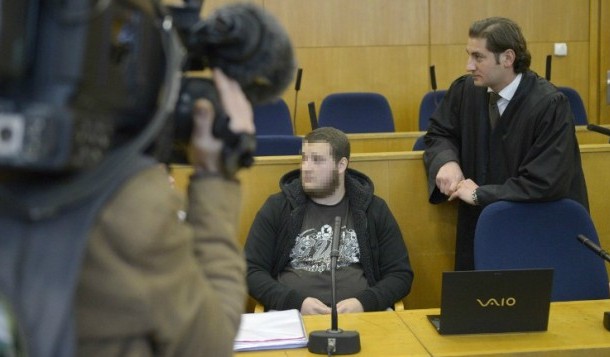
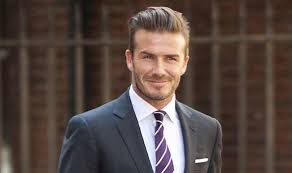
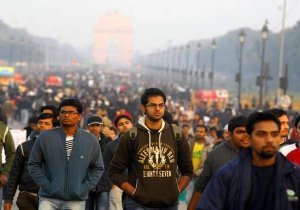
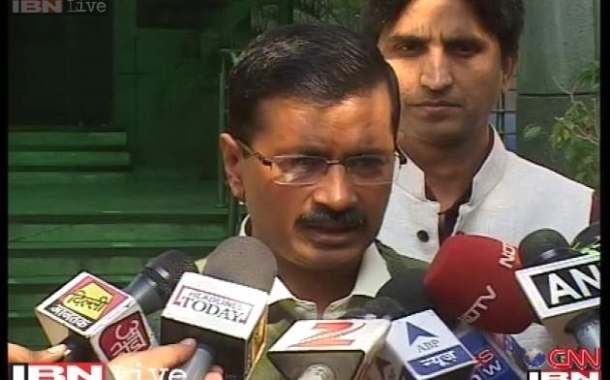




![Online [Free Watch] Full Movie Bobbi Jene (2017)](http://www.realnewsofindia.com/wp-content/uploads/2014/12/wildlife-610x380.jpg)
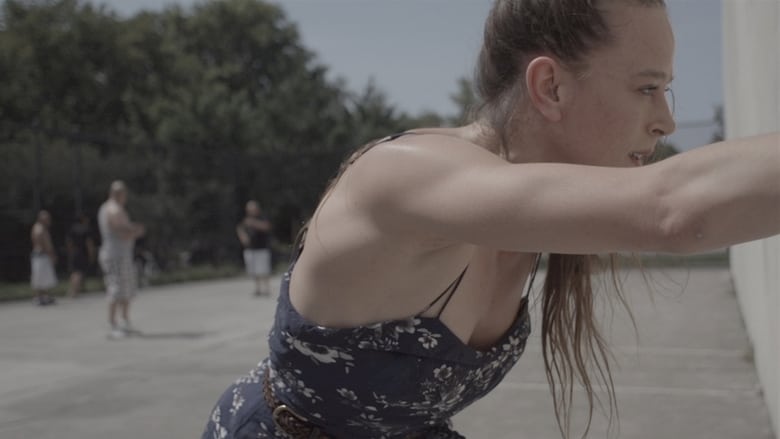

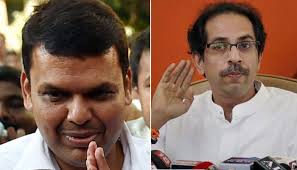





Recent Comments